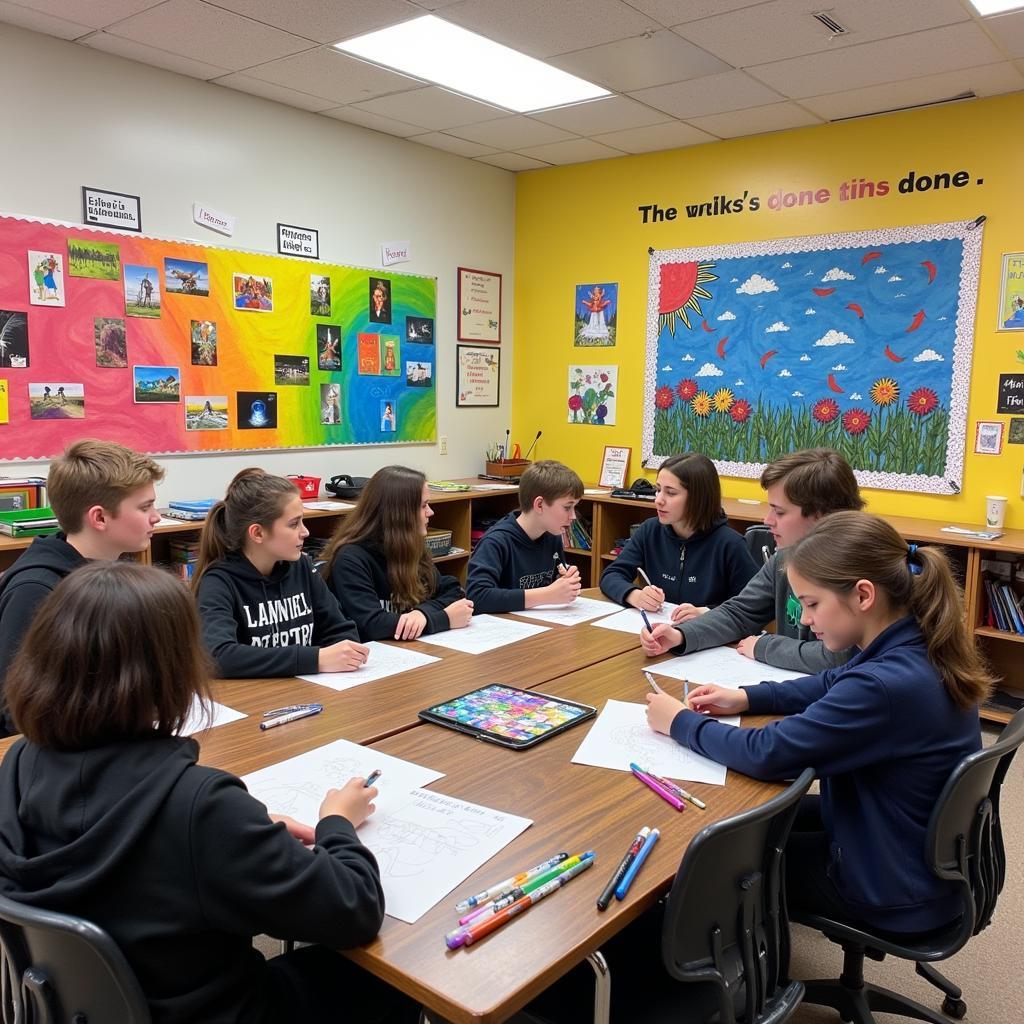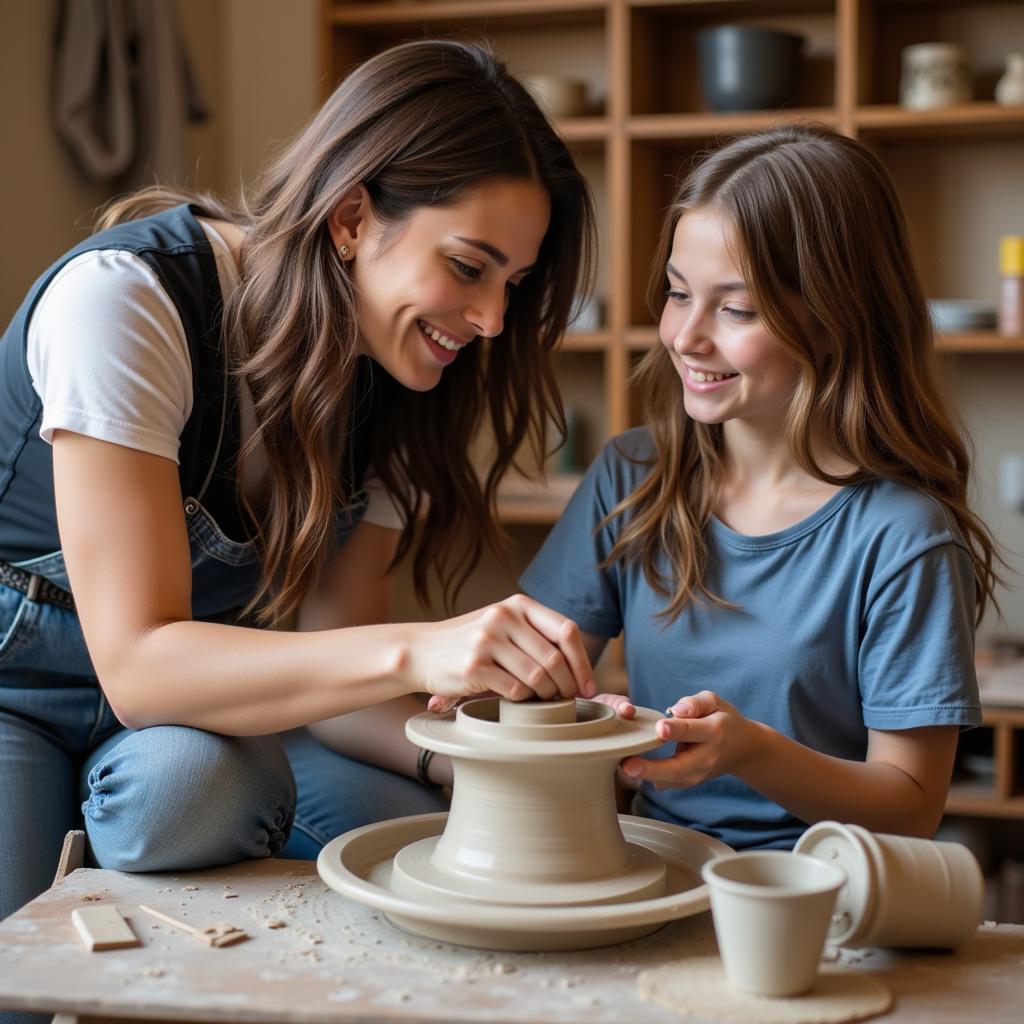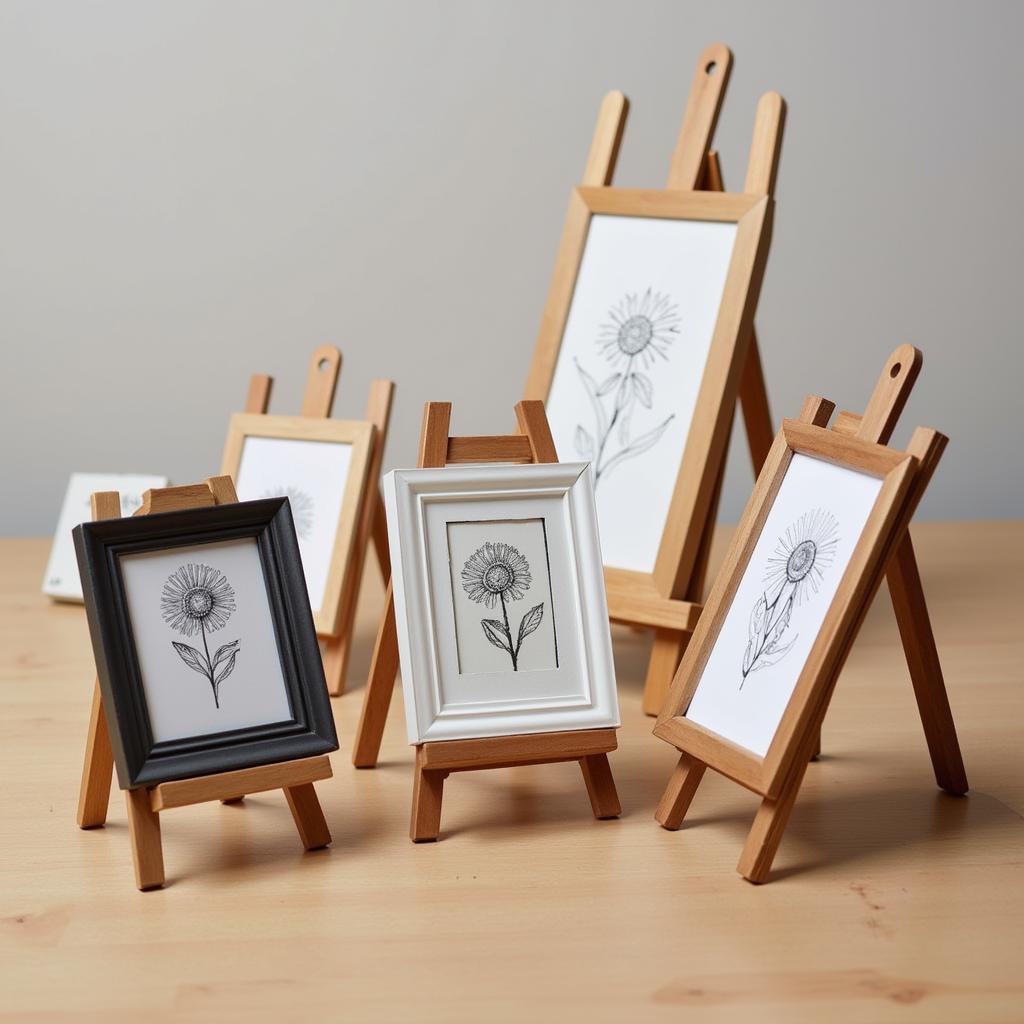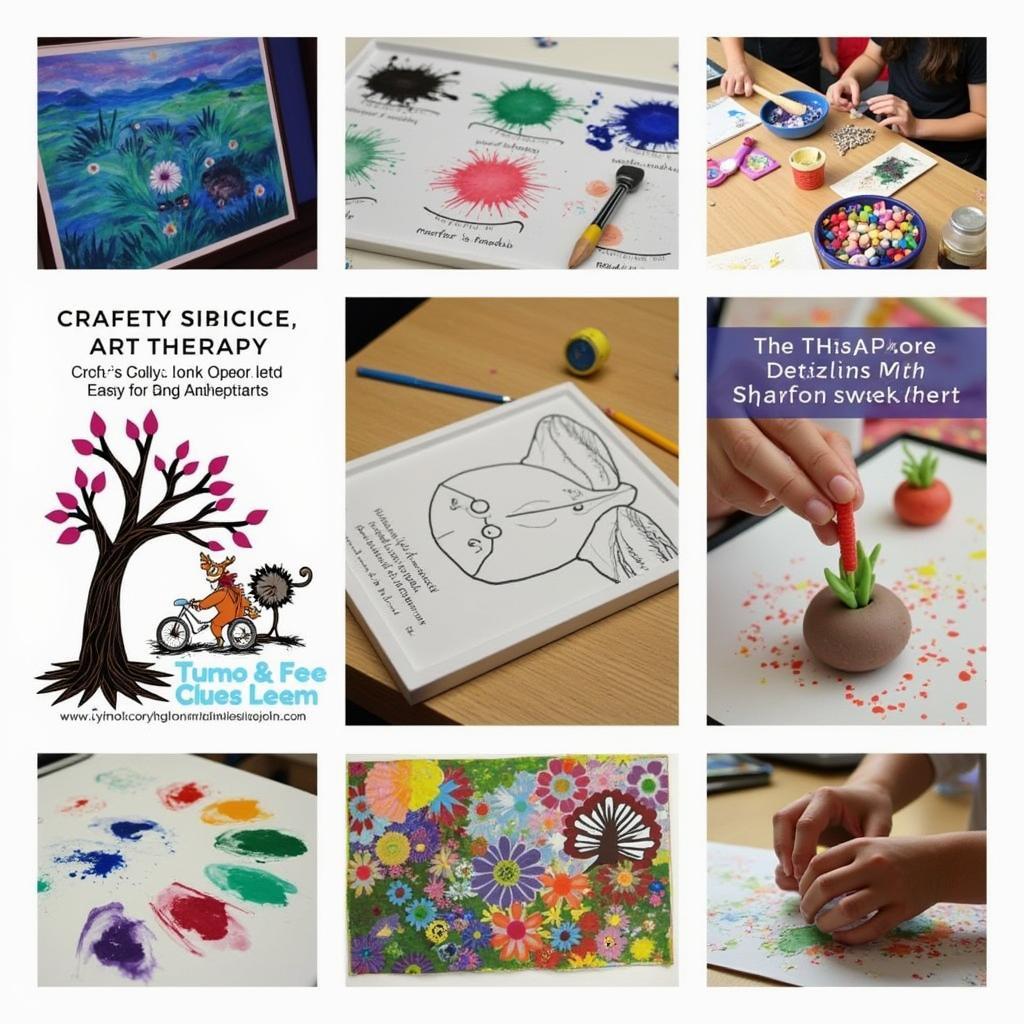Unlocking Creativity: Exploring the Core of Art Education Teaching Philosophy
An Art Education Teaching Philosophy is more than just a statement; it’s the beating heart of an educator’s approach to fostering creativity and artistic exploration in their students. It’s a dynamic blend of beliefs, values, and practical strategies that guide how we, as art educators, nurture the next generation of artists, designers, and creative thinkers.
Delving Deeper: What is an Art Education Teaching Philosophy?
At its core, an art education teaching philosophy articulates your fundamental beliefs about the learning process, the role of art in society, and how these beliefs translate into your teaching methodologies. It’s about creating a learning environment where students feel empowered to experiment, innovate, and express themselves authentically.
 Students brainstorming ideas in an art classroom
Students brainstorming ideas in an art classroom
Key Components of a Strong Art Education Teaching Philosophy
A comprehensive art education teaching philosophy should encompass several key elements:
- Vision of Art Education: What is the purpose of art education in today’s world? How can it empower students and shape their perspectives?
- Learning and Development: What are your beliefs about how students learn best in an art setting?
- Teaching Strategies: What specific teaching methods and approaches will you employ to facilitate artistic growth and exploration?
- Assessment and Feedback: How will you evaluate student progress and provide constructive feedback that fosters continuous improvement?
- Classroom Environment: What kind of learning environment will you cultivate to inspire creativity, collaboration, and a love for art?
 Art teacher providing guidance to a student using a pottery wheel
Art teacher providing guidance to a student using a pottery wheel
Crafting Your Unique Art Education Teaching Philosophy
Developing your own teaching philosophy is an ongoing journey of self-reflection and refinement. Here’s a roadmap to guide you:
- Reflect on Your Experiences: What experiences as an artist and learner have shaped your beliefs about art education?
- Research Different Approaches: Explore various art education philosophies, such as DBAE (Discipline-Based Art Education), Visual Culture Art Education, and Social Justice Art Education.
- Identify Your Core Values: What values are non-negotiable in your art classroom? Creativity? Collaboration? Experimentation?
- Write a Draft, Revise, and Refine: Articulate your philosophy in writing, ensuring it reflects your authentic voice and beliefs.
Remember, your art education teaching philosophy is a living document. It should evolve alongside your experiences, observations, and ongoing professional development.
The Impact of a Well-Defined Art Education Teaching Philosophy
A well-articulated teaching philosophy offers numerous benefits for both the educator and the learner:
- Provides Clarity and Direction: It acts as a compass, guiding your instructional decisions and ensuring alignment with your core beliefs.
- Fosters Consistency and Purpose: It helps you create a cohesive learning experience for your students, connecting every lesson and activity to a larger purpose.
- Enhances Communication and Collaboration: It provides a framework for meaningful conversations with colleagues, parents, and students about your approach to art education.
- Inspires Confidence and Growth: A clearly defined philosophy can boost your confidence as an educator and empower you to advocate for the transformative power of art education.
FAQs About Art Education Teaching Philosophies
1. What if my teaching philosophy changes over time?
It’s perfectly normal for your teaching philosophy to evolve! Teaching is a dynamic profession, and your beliefs will likely be shaped by new experiences and insights. Regularly revisit and revise your philosophy to reflect your current thinking.
2. How can I ensure my teaching aligns with my philosophy?
Make a conscious effort to connect your daily lessons and activities to the core principles outlined in your teaching philosophy. Reflect on your practice and identify areas where you can better align your actions with your beliefs.
art teacher teaching philosophy is an important aspect of art education that helps teachers to define their beliefs and values about teaching art.
Conclusion
Your art education teaching philosophy is a powerful tool that can shape the lives of your students and ignite their creative potential. Embrace the journey of defining and refining your philosophy, and let it guide you in creating a vibrant and inspiring learning environment where artistic exploration knows no bounds.
Need help exploring different private art classes near me?
Contact us!
Phone: 02462573573
Email: danteum@gmail.com
We’re available 24/7 to assist you!



